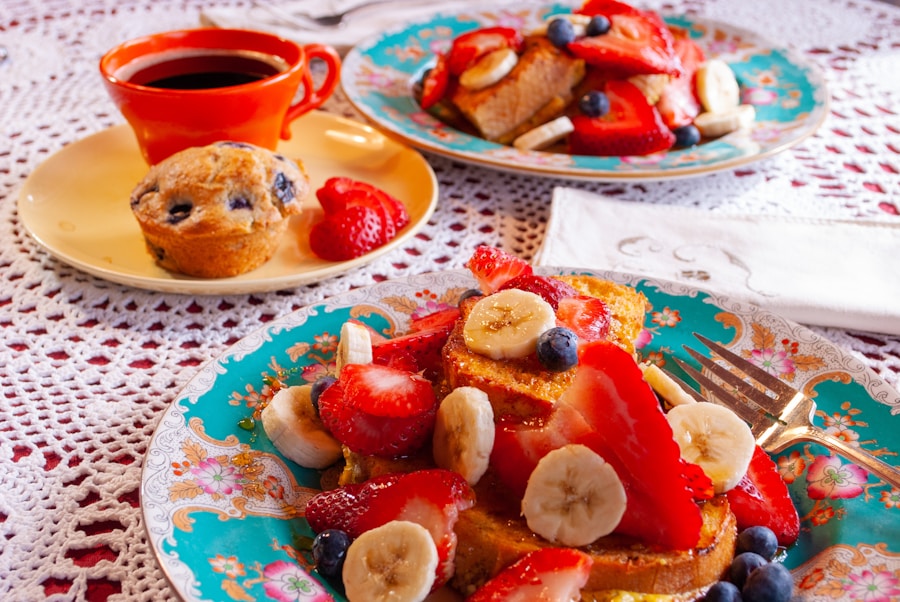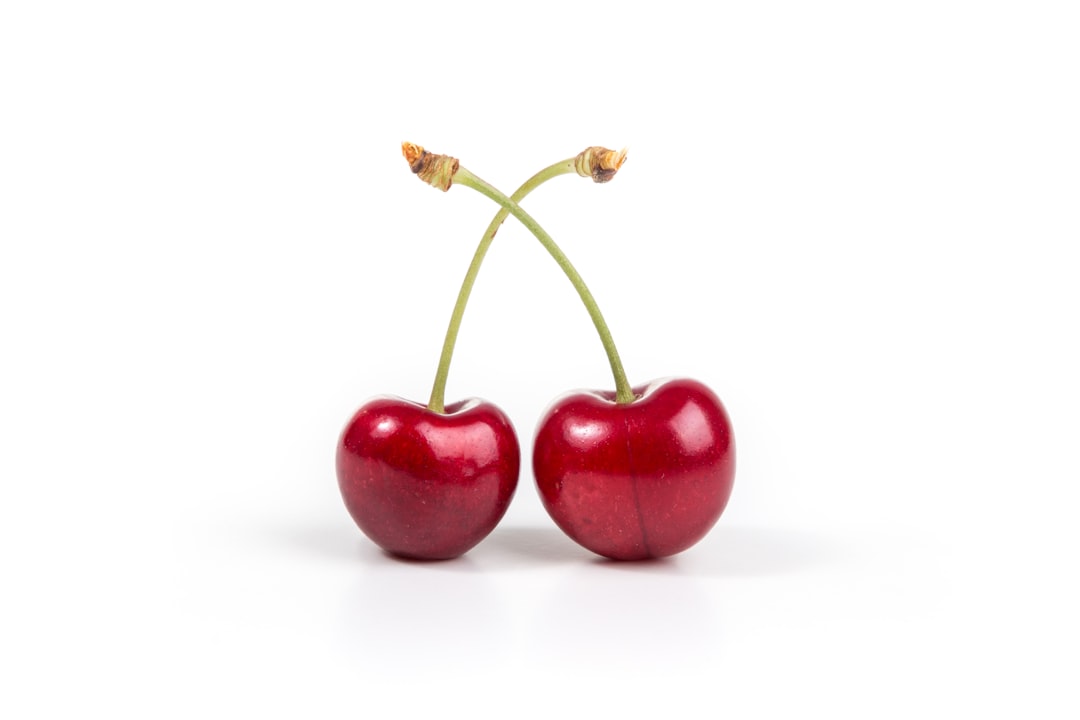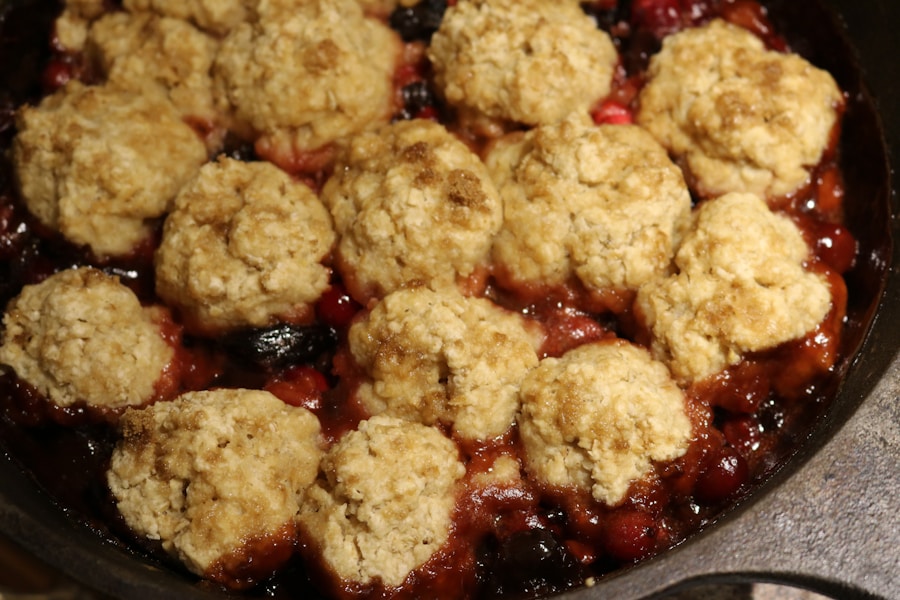French toast, a beloved breakfast staple, has a rich history that transcends borders and cultures. While its name suggests a French origin, the dish’s roots can be traced back to ancient times, with variations appearing in various forms across the globe. The basic concept involves soaking bread in a mixture of eggs and milk before frying it until golden brown.
This simple yet delightful preparation transforms stale or leftover bread into a delicious meal, showcasing the culinary ingenuity of using what one has on hand. The appeal of French toast lies not only in its comforting taste but also in its versatility. It can be enjoyed sweet or savory, making it suitable for any palate.
Whether served with a drizzle of maple syrup, a dusting of powdered sugar, or even savory toppings like cheese and herbs, French toast can easily adapt to different flavor profiles. This adaptability has made it a favorite in households and restaurants alike, often gracing breakfast tables and brunch menus around the world.
Key Takeaways
- French toast is a classic breakfast dish made with bread soaked in a mixture of eggs and milk, then fried until golden brown.
- The key ingredients for perfect French toast include bread, eggs, milk, vanilla extract, and cinnamon.
- To make French toast, dip bread slices into a mixture of beaten eggs, milk, vanilla extract, and cinnamon, then fry in a buttered skillet until golden brown on both sides.
- Tips for perfecting French toast include using thick slices of bread, letting the bread soak in the egg mixture for a few minutes, and cooking over medium heat.
- Creative toppings and fillings for French toast include fresh fruit, whipped cream, chocolate chips, and nut butter, while serving suggestions for a brunch with French toast include bacon, sausage, and fresh orange juice.
Ingredients for the Perfect French Toast
To create the perfect French toast, one must start with the right ingredients. The foundation of this dish is, of course, the bread. While traditional recipes often call for thick slices of brioche or challah due to their rich texture and ability to absorb the egg mixture without falling apart, other types of bread can also be used.
Sourdough, whole grain, or even bagels can yield unique flavors and textures, allowing for personal preference to shine through. The egg mixture is equally crucial in achieving that custardy interior that defines excellent French toast. A standard ratio is typically two eggs for every cup of milk or cream, but this can be adjusted based on desired richness.
Adding a splash of vanilla extract enhances the flavor profile, while a pinch of cinnamon or nutmeg can introduce warmth and depth. For those looking to elevate their French toast further, incorporating a bit of sugar into the mixture can create a caramelized crust when cooked.
Step-by-Step Instructions for Making French Toast

Making French toast is a straightforward process that can be broken down into several easy steps. First, begin by preparing the egg mixture. In a large bowl, whisk together the eggs, milk, vanilla extract, and any spices you choose to include.
Ensure that the mixture is well combined and frothy, as this will help create an even coating on the bread. Next, heat a non-stick skillet or griddle over medium heat and add a generous pat of butter or a splash of oil to prevent sticking. While the pan heats up, take your slices of bread and immerse them in the egg mixture one at a time, allowing each slice to soak for a few seconds on each side.
This soaking time is crucial; too short will result in dry toast, while too long may lead to soggy bread. Once adequately soaked, place the slices onto the hot skillet. Cook for about 3-4 minutes on each side or until they achieve a golden-brown color.
Repeat this process until all slices are cooked, adding more butter or oil as needed.
Tips for Perfecting Your French Toast
| French Toast Tips | Details |
|---|---|
| Bread Type | Use thick slices of brioche or challah bread for a rich and indulgent French toast. |
| Egg Mixture | Whisk together eggs, milk, vanilla extract, and a pinch of cinnamon for a flavorful custard. |
| Soaking Time | Allow the bread to soak in the egg mixture for at least 5 minutes to ensure it’s fully infused with flavor. |
| Cooking Temperature | Cook the French toast on a medium-low heat to prevent burning and ensure even cooking. |
| Toppings | Top with fresh berries, powdered sugar, maple syrup, or a dollop of whipped cream for a delicious finish. |
Achieving the perfect French toast requires attention to detail and a few insider tips that can elevate your dish from good to exceptional. One key aspect is the choice of bread; using day-old or slightly stale bread is ideal as it absorbs the egg mixture better without becoming overly mushy. If you only have fresh bread on hand, consider lightly toasting it before soaking to create a firmer texture.
Temperature control is another critical factor in cooking French toast. A medium heat setting allows for even cooking without burning the exterior while ensuring that the interior cooks through properly. If you find that your French toast is browning too quickly, reduce the heat slightly and give it more time to cook through.
Additionally, keeping cooked slices warm in an oven set to low heat can help maintain their temperature while you finish cooking the remaining pieces.
Creative Toppings and Fillings for French Toast
While classic French toast is delightful on its own, adding creative toppings and fillings can take it to new heights. Fresh fruits such as strawberries, blueberries, or bananas can add brightness and natural sweetness when piled high on top of your French toast. A drizzle of honey or maple syrup enhances these flavors further while providing that quintessential breakfast experience.
For those who enjoy indulgence, consider filling your French toast with cream cheese or mascarpone before cooking. This technique creates a delightful surprise when you cut into the toast, revealing a creamy center that pairs beautifully with fruit toppings. Alternatively, savory options like sautéed mushrooms and spinach or even crispy bacon can transform French toast into a hearty brunch dish that appeals to those who prefer less sweetness in their meals.
Serving Suggestions for a Brunch with French Toast

Pairing French Toast with Complementary Dishes
When planning your brunch menu, consider pairing French toast with complementary dishes such as crispy bacon or sausage links for those who enjoy a savory contrast. A fresh fruit salad can provide a refreshing balance to the richness of the toast while adding vibrant colors to your table setting.
Beverage Choices for a Well-Rounded Brunch
Beverage choices are equally important in creating a well-rounded brunch experience. Freshly squeezed orange juice or a classic mimosa can add a celebratory touch to your meal. For coffee lovers, serving a selection of brewed coffee or espresso drinks alongside your French toast can enhance the overall enjoyment of the meal.
Customizing Drinks with a Coffee Bar
Consider setting up a small coffee bar with flavored syrups and creamers to allow guests to customize their drinks according to their preferences.
Variations on the Classic French Toast Recipe
While traditional French toast holds a special place in many hearts, there are countless variations that can cater to different dietary needs and flavor preferences. For those seeking gluten-free options, using gluten-free bread allows everyone to enjoy this classic dish without compromising taste or texture. Additionally, almond milk or oat milk can be substituted for dairy milk in the egg mixture for those who are lactose intolerant or following a vegan diet.
Another exciting variation is stuffed French toast, where slices are filled with ingredients like Nutella and banana or peanut butter and jelly before being dipped in the egg mixture and cooked. This approach not only adds an element of surprise but also allows for endless creativity in flavor combinations. For an even more decadent treat, consider topping stuffed French toast with whipped cream and chocolate sauce for an indulgent dessert-like breakfast.
Conclusion and Final Thoughts on French Toast
French toast is more than just a breakfast dish; it embodies comfort and creativity in the kitchen. Its simplicity allows for endless experimentation with flavors and textures, making it suitable for any occasion—from casual family breakfasts to elegant brunch gatherings with friends. The ability to customize ingredients and toppings means that everyone can find their perfect version of this classic dish.
As you explore the world of French toast, remember that the joy lies not only in the final product but also in the process of making it. Whether you stick to traditional recipes or venture into innovative variations, each bite offers an opportunity to savor deliciousness while creating cherished memories around the table. So gather your ingredients, invite loved ones over, and indulge in this timeless treat that continues to delight palates across generations.



